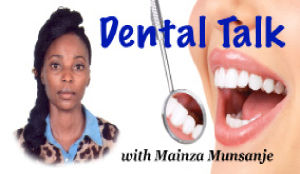 WINTER is over and now we welcome the beautiful sunny outdoors, the airy clothings and an increase in social life.
WINTER is over and now we welcome the beautiful sunny outdoors, the airy clothings and an increase in social life.
If you are like me who gulps down many mugs of black coffee and tea then you may have noticed like I have that your teeth may have changed colour and become darker than they usually are.
Teeth stains can be unsightly and make one shun social interactions. Being the social beings that we are and the smile being the one thing people notice during interactions, we are almost naturally compelled to do something about it.
Teeth discolourations are caused by a multitude of factors.
Firstly what we need to know about tooth stains is that they may be situated internally in the tooth known as intrinsic stains or located externally on tooth substance enamel and referred to as extrinsic stains.
Also both types of stains can occur in a tooth.
Causes of extrinsic stains include foods and beverages such as the black teas and coffees, red wines, tobacco tar, poor oral hygiene practices leading to plaque and calculus accumulations and overuse of chlorohexidine mouth washes.
Intrinsic stains occur before the tooth erupts and are due to flourosis, flourosis causes mottling and brown discolouration of teeth.
It is caused by excess intake of fluoride especially in the first 8 years of life. Fluoride is a natural mineral that occurs in the earth’s crust.
Medications such as tetracycline and diseases of teeth such as poor enamel formation all lead to discoloured teeth.
Post eruptive causes of intrinsic stains are death of tooth following tooth injury or trauma, dental caries, dental fillings.
Methods for removal of stains and teeth discolourations include tooth bleaching, scaling and polishing and placement of veneers or crowns on teeth.
Bleaching may not be a new word to all, as the term has been used since time in memorial in reference to washing powders/ pastes, in the world of beauty, in the ever controversial skin bleaching.
In whatever aspect the word bleach is used, it all aims to achieve the same goal make something appear cleaner, brighter and attractive.
Scaling and polishing makes use of instruments to remove stains and smoothen tooth surfaces and veneers or crowns makes the use of placement of a cover or mask on the tooth surface to hide the discolorations.
Extrinsic stains are much easily dealt with unlike intrinsic stains. On the market are various toothpastes, mouth rinses and sugar free gums which promise you whitened teeth.
Depending on extent and severity of extrinsic stains they may be much easily dealt with using this measure.
Our good old salt which was used back in the day and is still in use was and is the cheapest measure to help remove stains and discolorations on tooth enamel.
However, some people may not be too comfortable with it due to the salty taste you have to deal with in the process.
Other measure to remove extrinsic stains includes salt and baking soda paste, lemon juice or water and baking soda paste and coconut oil rinse.
Stubborn stains such as those due to calculus, and long standing tea and coffee stains require professional cleaning known as scaling and polishing and or teeth bleaching, this is offered by the dental professional at the clinic or hospital.
Intrinsic stains depending on their cause and extent may not always render successful bleaching.
If stains are very severe veneers or crowns maybe placed on the teeth to mask the discolourations.
After all this talk about teeth discolourations and stains one thing we must know is each individual has a unique colour of teeth.
Colour of teeth is determined by the transparency of the enamel.
The enamel is the outer layer of teeth, it is a thin layer which is white in colour and semi-transparent, and the dentine which is the layer right below the dentine is darker than enamel and has a yellowish-brown colour.
Below this is dental pulp which has blood vessels lymphatics and nerves and is not visible through the overlying dentine and enamel in a normal healthy tooth.
Most people’s perception of tooth colour is distorted due to media and magazines hence most people assume teeth should be as white as snow or even whiter. Tooth colour varies according to age, gender and geographic location.
Primary teeth or baby teeth appear whiter than permanent or adult teeth because they have less transparent enamel and hence the yellow colour of dentine is not as visible.
Adult teeth have more transparent enamel hence making the teeth not so white. As we age the dentine becomes thicker and the teeth begin to appear less white and may take up a cream white to yellow colour.
Females tend to have whiter teeth because they tend to have smaller teeth hence they have less amount of dentine.
This is the same reason why back teeth, which are larger, tend to appear darker than front teeth.
So after all is said and done as we aim to achieve a perfect snow white smile let’s remember that the dentine will always be there to give teeth a not so white look.
That’s it, till next Sunday have a beautiful smiley week.
God bless.
Comments:nzamai@yahoo.co.uk






